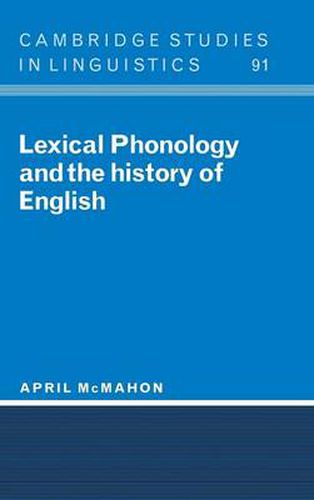Readings Newsletter
Become a Readings Member to make your shopping experience even easier.
Sign in or sign up for free!
You’re not far away from qualifying for FREE standard shipping within Australia
You’ve qualified for FREE standard shipping within Australia
The cart is loading…






This book has two main goals: the re-establishment of a rule-based phonology as a viable alternative to current non-derivational models, and the rehabilitation of historical evidence as a focus of phonological theory. Although lexical phonology includes several constraints, such as the Derived Environment Condition and Structure Preservation, intended to reduce abstractness, previous versions have not typically exploited these fully. The model of lexical phonology presented here imposes the Derived Environment Condition strictly; introduces a new constraint on the shape of underlying representations; excludes underspecification; and suggests an integration of lexical phonology with articulatory phonology. Together, these innovations ensure a substantially more concrete phonology. The constrained model is tested against a number of well-known processes of English, Scottish and American accents, including the Vowel Shift Rule, the Scottish Vowel Length Rule, and [r]-insertion, and draws interesting distinctions between what is derivable by rule and what is not.
$9.00 standard shipping within Australia
FREE standard shipping within Australia for orders over $100.00
Express & International shipping calculated at checkout
This book has two main goals: the re-establishment of a rule-based phonology as a viable alternative to current non-derivational models, and the rehabilitation of historical evidence as a focus of phonological theory. Although lexical phonology includes several constraints, such as the Derived Environment Condition and Structure Preservation, intended to reduce abstractness, previous versions have not typically exploited these fully. The model of lexical phonology presented here imposes the Derived Environment Condition strictly; introduces a new constraint on the shape of underlying representations; excludes underspecification; and suggests an integration of lexical phonology with articulatory phonology. Together, these innovations ensure a substantially more concrete phonology. The constrained model is tested against a number of well-known processes of English, Scottish and American accents, including the Vowel Shift Rule, the Scottish Vowel Length Rule, and [r]-insertion, and draws interesting distinctions between what is derivable by rule and what is not.